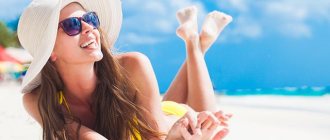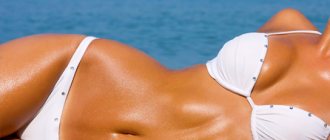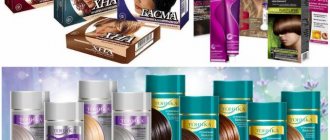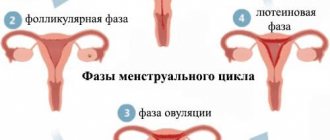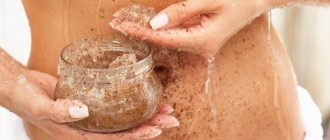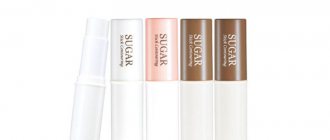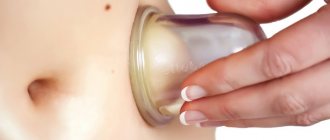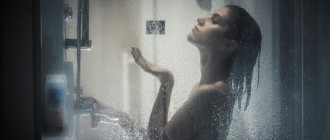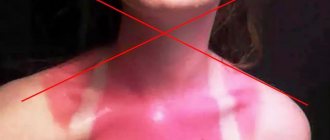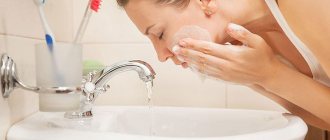Sun tanning and skin aging.
Thanks to the Sun, our skin produces vitamin D. Tanning is associated with a beautiful and healthy body. But these associations usually have nothing to do with healthy skin! Photoaging of the skin. Sunlight causes premature aging of the skin, gradually destroying collagen and elastin fibers in it. Skin damaged by ultraviolet radiation loses its ability to self-regenerate, which leads to premature aging and the risk of developing cancer. Excessive tanning causes solar elastosis, a skin condition that cannot be cured. Even if you never tan again after acquiring solar elastosis, your skin will not return to its healthier state—it is permanent. The skin becomes loose, wrinkled, saggy and has a hard, leathery appearance. On average, 90% of skin aging is caused by the sun. Skin damage from the sun accumulates over a lifetime. It doesn’t matter if the tan was in childhood or in middle age - it all accumulates. People who use sunscreen daily have skin that ages 24% slower.
Moisturize your skin after sunbathing
You may like the chocolate color. But the body perceives excess melanin in cells as a signal of skin damage and strives to shed the damaged “skin” as quickly as possible. The top layer of tanned skin becomes drier - this makes it easier for the body to exfoliate the affected cells.
To avoid losing your tan ahead of time, moisturize your skin thoroughly every day and try not to use scrubs and avoid active massage with a washcloth.
The process of exposure to sunlight.
The solar spectrum is divided into 3 ranges: ultraviolet (UV), visible and infrared. It is the ultraviolet spectrum that affects skin tanning. Ultraviolet radiation is divided into 3 bands: UVA, UVB, UVC. They differ in wavelength and degree of effect on the skin. UVC rays are blocked by the ozone layer and do not reach the Earth's surface. You don't have to worry about them. UVB rays penetrate the surface layers of the skin. Harmful effects: sunburn, skin cancer, skin aging, eye damage. Beneficial effect: in small quantities (!) they help produce vitamin D. But vitamin D can be obtained from regular food or from vitamin-mineral complexes. The most dangerous time: from spring to autumn, from 10 to 16 hours of the day. UVA rays penetrate into the deeper layers of the skin and make up 80% of ultraviolet radiation that reaches the surface of the skin. Harmful effects: wrinkles and further aging of the skin, skin cancer, eye damage, suppression of the immune system. They do not cause sunburn, unlike the best UVB, so the effect of these rays may not be noticeable at first. The most dangerous time: all year round, they even penetrate through glass.
Benefits of tanning
Moderate amounts of sunlight have a beneficial effect on certain skin diseases (acne, psoriasis, neurodermatitis, eczema, etc.), and also promote the production of vitamin D3. This so-called “sun hormone” ensures normal absorption of calcium and phosphorus, helps strengthen muscles and bones, accelerates wound healing and increases the overall tone of the body. In addition, vitamin D3 strengthens the immune system and has a positive effect on blood circulation (blood circulation improves, blood pressure normalizes).
Solariums, melanoma.
Skin cancer, melanoma. Excessive tanning causes people to get skin cancer even more often than smokers get lung cancer from smoking. Types of deadly skin cancer: benign and malignant skin tumors, basal cell carcinoma, squamous cell carcinoma and melanoma - the most dangerous case. Getting sunburned is the main risk factor for getting melanoma. If a person tans but does not get sunburned, the risk of developing melanoma is much lower than with sunburn. Melanoma Facts: Melanoma is one of the most common types of skin cancer in young people, especially young women. Melanoma is a rapidly progressing cancer that spreads very quickly and metastasizes throughout all organs. In addition to the surface of the skin, melanoma can develop in the eye (no one except an ophthalmologist, when examining the fundus of the eye, can detect this), on the mucous membranes of the intestines and esophagus (also quite difficult to detect), in the oral cavity. If a person has had more than 5 sunburns in their entire life history, then the risk of melanoma increases by 2 times. 86% of melanoma cases are caused by sun exposure! According to the American Cancer Society, 2 million cases of sun-related skin cancer are diagnosed every year. The WHO said it records 3 million cases of skin cancer per year (from all causes), of which 132,000 are melanoma. Tanning devices are a leading cause of cancer in humans, along with factors such as plutonium, cigarettes and ultraviolet radiation from the sun. This is the official conclusion of the International Agency for Research on Cancer and a branch of WHO. Solariums destroy the first sign of youth - healthy skin. The risk of developing melanoma is directly proportional to the time a person spends in a solarium. Specific examples with numbers: People who have used tanning beds 10 times or more have a 34% risk of melanoma compared to those who have never used tanning beds. If a person has spent 10 to 19 hours in a solarium in his entire life, then the risk of melanoma increases by approximately 80%. If more than 50 hours, then the risk increases almost 3 times! And this risk does not decrease over time. People who first used tanning beds before age 35 have a 75% increased risk of melanoma. 55% of women from Sweden who visited a solarium more than once a month were diagnosed with melanoma! Lamps in solariums emit 10-15 times more skin-damaging UVA rays than the sun. 20 minutes in a tanning machine is equivalent to 4 hours of tanning on the beach. More than 400 thousand cases of skin cancer in the United States alone are associated with the use of tanning beds. Tanning beds are a worldwide problem and are being banned around the world: 12 US states and the District of Columbia have banned non-medical use of tanning beds for people under 18; The British Medical Association and the Institute of Cancer Research have achieved a ban on visiting solariums for people under 16 years of age; Brazil and Australia have banned tanning beds altogether; But photoepilation does not increase the risk of skin cancer, since the radiation from this type of hair removal is not ultraviolet. The dangers of excessive tanning. Excessive sun exposure can cause short-term infertility in men and decreased fertility in women. Tanning can cause tanerexia - a person’s mental dependence on ultraviolet people. 25% of people who visit a solarium suffer from painful passion for tanning syndrome. Such people do not like their skin color, avoid it and try in every possible way to change the color of their skin, even when it is not pale, but already tanned. Ultraviolet radiation causes the production of the “hormone of joy” - endorphin. The tanning procedure affects your mood and well-being. Therefore, people who often visit solariums can feel a good surge of energy after tanning, feel more alert and efficient. Artificial tanning today is a mass product on which solarium companies make huge money. And the owners of such companies, as a rule, do not talk about obvious health threats.
Phototype of human skin.

0
Skin color is an adaptation to the amount of sunlight. There is a direct correlation between the geographic distribution of people and their skin color. The type and amount of melanin in the skin determine a person’s individual protection from sun rays. Women in general have more sun-sensitive skin than men. This is because in the past, women needed increased amounts of vitamin D and calcium for fetal support and development and for breastfeeding. The risk of developing melanoma is 20 times higher for white people than for African-Americans. The most vulnerable part of the population are people with red or blond hair, blue or green eyes, fair skin, pigment spots and freckles.
How to choose sunscreen?
The lighter the skin phototype, the greater the need to use sunscreen, however, it is recommended to use it for all phototypes. At least in order to minimize the risk of developing cancer and photoaging of the skin. Recommendations: SPF shows how much the cream protects from the sun. But this is a non-linear scale: SPF 15 blocks 93% of UV rays, SPF 30 blocks 97%, SPF 50 blocks 98%. The cream quickly wears off from the skin, so it is advisable to apply it every hour, and even more so after contact with water, clothing, or sand. It is better to give preference to creams/lotions rather than sprays. There is a potential health risk if the contents of the spray are inhaled. Choose a cream with UVA protection, as it is greatly underestimated. There are creams that provide good protection against UVB radiation (from burns), but do not protect against UVA radiation (photoaging and skin cancer). If your skin is very sensitive and/or prone to ACNE or hyperpigmentation, you need to be more careful when choosing a sunscreen. Sunscreens made in the USA are usually the most reliable sunscreens available. In Europe and Russia, sunscreens are classified as cosmetics, but in the United States they are classified as drugs, which means they are regulated and tested more strictly.
Sign up for a solarium
A solarium is the only way to prepare your skin for the burning rays of the tropical sun. Several 5-minute sessions at weekly intervals will prevent you from burning out on the first day of your vacation. When you choose a tanning studio, first of all, focus not on the shape of the machines - vertical or horizontal, but on the type of lamps. They are low, high pressure and combined. The first ones are suitable for fair-skinned people prone to rapid redness; the second - moderately dark; still others – for those whose skin acquires a thick chocolate shade in a couple of days and rarely burns. Also, make sure that your solarium has a special lamp for your face, because it turns brown more slowly than the rest of your body. As for the recently fashionable auto bronzes, they will in no way save you from burns. Creams and sprays simply color the skin, while after a session in the solarium you will darken due to the fact that the cells produce melanin. It will not just make you dark, but at the same time protect you from the dangerous effects of ultraviolet radiation.
Moles and skin examination.
Dermatoscopy. It is recommended to undergo a skin examination by a dermatologist once a year using dermatoscopy (detailed examination of moles using special instruments). If there are certain risk factors, then preventive examinations may be recommended even more frequently. Tumor markers are not used in the initial diagnosis of melanoma. They are usually used only at stages 3 or 4 of melanoma development. Increased risk factors: melanoma was diagnosed in one of the relatives; light skin type; weakened immune system or obesity. Those who use cigarettes, alcohol, anabolic steroids - all this also reduces immunity; many moles on the body. If there are more than 11 moles on one hand, then there are most likely more than 100 moles on the whole body, which means such people are at a special risk group; Moles. Self-examination of the skin. It is recommended to examine your skin yourself once a month. This is not necessary to monitor all moles in detail. And to identify obvious and rapid changes in the skin. How to find malignant moles on the body? There is an ABCDE rule:
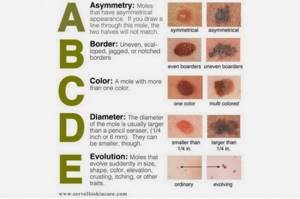
0
Assymetry / Asymmetry - one half of the mole does not correspond to the other. Border / Borders - the edges of the mole are irregular or jagged, blurred. Color / Color - unequal color over the entire surface, sometimes it can include different shades. Diameter - if a mole is larger than 6mm in diameter, then there is a higher chance that it is melanoma. Evolution / Evolution - the formation gradually develops, changes in shape and color, melanoma will in any case increase. There are other signs: a non-healing mole, spreading of pigment beyond the borders of the mole, redness, swelling, sensitivity, itching, pain, cracking, seepage, bleeding, peeling.
Prepare your skin for tanning
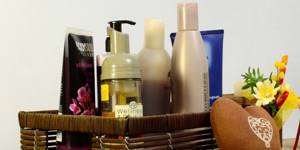
To make it easier for the skin to accumulate melanin, Four Safe Tanning Tips For A Healthy Summer Glow evenly and gradually darken, it is worth thoroughly cleansing it of impurities and dead cells.
You can use a store-bought or homemade body scrub (for example, from instant oatmeal slightly soaked in water), or limit yourself to a massage using an exfoliating glove.
But don't overdo it. It is enough to cleanse the skin in this way once a week or a week and a half.
Mole removal.
Before removing moles, it is important to undergo a histological examination to verify that the moles being removed are not cancerous. Melanoma is removed with a certain indentation. If there is melanoma on a mole, and it is removed without indentation, like an ordinary mole, a recurrence of melanoma may develop, which can pose a threat to a person’s life. Removing moles on the body will not help protect against melanoma. The more moles on the body and the more atypical moles, the higher the risk of developing skin cancer. But moles are only an indicator, not the cause itself. If all moles are removed, the risk of skin cancer remains the same. In addition, only 30% of melanoma develops on moles. If all moles are removed, there is no 30% reduction in the chance of developing melanoma; it has a chance of developing near the mole or on other areas of the skin. In addition, removing ordinary moles is sometimes impractical even from a cosmetic point of view. For example, removing a mole in the sternum area is very likely to leave a scar.
Tanning pills.
Dangerous options: Melanotan/afamelanotide and tanning pills. Not designed or intended for tanning. Main purpose: stimulating the production of melanin - skin pigment. Used in the treatment of porpheria, a hereditary genetic disease, and vitiligo, a disease in which skin pigmentation is impaired. How it is used: used illegally to obtain a quick and even tan in the sports industry, sold illegally in Russia. By using the drug for other purposes and suffering harm from such use, there is a chance that Melonotan will not be available to those who really need it for a long time. Forms of the drug: afamelanotide (Melanotan I) - treatment of porpheria and vitiligo and bremelanotide (Melanotan II) - treatment of sexual dysfunction. When buying Melanotan on the black market, it can contain both Melanotan I and Melanotan II. Risks: Melanotan has not been tested for safety. The quality and effectiveness of the drug is known only in the treatment of two diseases: porpheria and vitiligo. Therefore, the side effects of its use and their severity are unknown. It is not known how to treat drug overdose. And the list of side effects is huge. Using a solarium and Melanotan is even more dangerous; it can lead to skin complications, heart problems, and increase the risk of melanoma. Canthaxanthin. Unsafe in large doses, which are required for tanning. It may be safe for humans, but not for the purpose of tanning, unless the norm of 67 mg per 1 kg is exceeded. The additive can be used as a food coloring, but should not be used on skin. Main Uses: Canthaxanthin (E161g) - Approved in many countries for use as a food coloring. It is added to animal feed (for example, chickens to change the color of the yolk to a brighter one) and fish (to change the color of meat). How to use it: to imitate tanning with a dye that gives the skin an unusual carrot color. Risks: pigment is deposited not only in the skin, but also in the eyes. Yellow crystalline deposits appear in the retina of the eye, which most likely do not resolve and remain in the retina forever. Causes liver damage, as well as itching - hives.
Long tanning life
Scrub Contrary to misconception, the scrub will not deprive you of a bronze tone, but, on the contrary, will remove all excess and make your skin radiant and smooth. Cream The drier the skin, the faster the tan will come off. You can extend its life if you buy a moisturizer and use it every morning and evening. You will achieve the best effect if you purchase a product from the “After Sun” series: it will not only replenish the moisture deficiency, but will also take care of preserving the chocolate shade. Food Vitamin A will help the skin quickly recover and maintain a tan. Therefore, you should add beef liver, tomatoes and apricots to your menu.
Protection of body and eyes from ultraviolet radiation.
If you look at the Sun for too long, you can go blind. Solar retinopathy is damage to the retina from ultraviolet rays. There are acute and chronic eye lesions. Staying without special glasses and constant UVA and UVB radiation cause cataracts (up to 20% of cataracts can be associated with exposure to the sun or other ultraviolet exposure) and cancer of the eye itself. Basic sun protection: from 10 am to 4 pm it is better to stay in the shade; before 10 and after 16, if not on the beach - clothing that protects the skin from the sun as much as possible: a hat that protects both the neck and face, glasses with ultraviolet protection; Apply sunscreen to exposed skin;
Safe tanning rules
In order to get a beautiful, even tan without sunburn, you should follow simple rules:
- First of all, we carry out an intensive peeling procedure a week before tanning to remove the top layer of dead cells. You can cleanse your skin both in the salon and at home using natural scrubs. Cleansing the skin will allow you to get an even tan without age spots in the future.
- Immediately before tanning, take a light shower to wash off all makeup.
- We use special products to protect the skin from intense ultraviolet radiation. Apply the products to cleansed skin a few minutes before going out into the sun. This will avoid sunburn.
- You can sunbathe without harming your health only before 11 a.m. or after 4 p.m.
- It is recommended to start with 15 minutes so that the skin adapts to intense sun exposure. Every day you can increase the duration of exposure to the sun, bringing it up to two hours a day. In a solarium, the duration of the first procedure should not exceed 5 minutes.
- After sunbathing, we apply moisturizing cosmetics to the body to restore the water balance of cells and prevent the appearance of wrinkles.
- You can’t stay in water for a long time, because the sun’s rays have the ability to be reflected from mirror surfaces. There is a risk of burning your face, shoulders and back.
Also interesting: Sunburn of the lips, causes, first aid and further care
Filters on glasses.
Glasses must have special filters that protect against ultraviolet radiation. Glasses must protect against UVA radiation. The application for glasses or lenses must indicate 100% UV protection. And for serious protection in strong UV rays, you should use glasses with side panels. Ordinary glasses without special protection do not protect the eyes from all ultraviolet radiation (regular glass). They protect only from UVB radiation, like regular glass, behind which we sit and do not sunbathe, but they allow UVA radiation to pass through. Poorly made sunglasses not only do not protect your eyes, but can also harm them. Such glasses, as a rule, contain ordinary plastic instead of high-quality lenses. When a person is in the sun, he often squints - this is to protect the eyes from a certain amount of rays entering it. By putting on low-quality sunglasses, he, firstly, stops squinting. Secondly, in such dark glasses the pupil dilates and thereby increases the flow of ultraviolet radiation into the retina. As a result, more harmful ultraviolet UVA radiation penetrates into the eye than without low-quality sunglasses. The color of glasses has nothing to do with the ability to protect against ultraviolet radiation. UV protection is a special coating on the lenses.
Protection with SPF filter
“It is imperative to protect yourself from the active sun and choose the right cosmetics. For the face and body in general, you should choose special cosmetics - it can be in the form of creams, sprays and other forms of release. But at the same time you need to defend yourself correctly. Be sure to pay attention to the SPF filter. It is this protection that increases the erythemal dose. For example, if we are talking about a 50+ filter, then the erythemal dose becomes twice as large. The erythemal dose refers to the minimum time during which redness appears on the skin during exposure to active sun. Accordingly, if, for example, a person begins to get slightly toasted in an hour, then using filter 50, his tan will be active in two hours. You need to select the optimal filter based on your skin phototype - this is an individual indicator. Accordingly, to protect the skin, you should smear every two to three hours. It is worth remembering that the product should be applied to clean skin, so it must first be treated with a cotton swab with chlorhexidine.
It’s the same with skincare cosmetics - they can also include different protection filters; some brands also have creams with a 50+ filter,” says Tatyana Egorova.
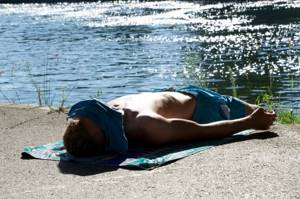
No worse than at a resort. Is it possible to get a lasting tan in the north? Read more
Time, weather, water, temperature.
Protecting your eyes and body from ultraviolet radiation is necessary at any time throughout the day, not only in sunny weather, at any temperature. Ultraviolet radiation has nothing to do with temperature. Snow perfectly reflects ultraviolet radiation. It can reflect more than 80% of the ultraviolet rays that fall on it. Hence such terms as: snow blindness or snow ophthalmia, cataract, etc. And in the mountains, ultraviolet radiation increases by 4% for every 300 meters you rise. Ultraviolet light can penetrate clouds and fog even on cloudy days and damage your eyes. Rain clouds scatter 80% of ultraviolet radiation. The rest of the clouds are from 10% to 50% ultraviolet radiation. Clouds partially block UVB rays, but do not block UVA rays well. And sometimes UVA rays are even amplified due to cloud cover, although we don’t feel it. Shade does not always protect from the sun's ultraviolet rays - they can reflect off the landscape and create diffuse ultraviolet radiation. Shade reduces radiation levels by approximately 50%. White sand increases ultraviolet radiation by 15-25%. Water does not always protect against exposure to sunlight. Ultraviolet radiation can penetrate to a depth of 1 meter. It is recommended to apply sunscreen both before and after swimming. When the Sun is above, less ultraviolet radiation reaches the eyes. In addition, a person squints at such times and blocks this radiation even more. Despite the fact that most ultraviolet radiation arrives between 10 a.m. and 4 p.m. (just when the Sun is above), the opposite is true for the eyes. When staying outdoors for a long time, a forecast of the UV index (ultraviolet radiation level, along with a weather forecast) can be useful. For example, https://meteoinfo.ru/uvi - here you can see the level of ultraviolet radiation (UV irradiation index) by region of Russia .
Go to a cosmetologist
The sun's effect on the skin is akin to enemy intervention: the sun takes away our main wealth - moisture. If you don't want to come home with a face that looks like a shriveled peach or apple, protect yourself from dryness before heading to hot countries. Of course, you can buy an expensive cream and apply tons of it every day, but keep in mind: clogged pores and dead skin particles will not allow it to penetrate deeper than the epidermis. Therefore, first you must carry out the cleaning procedure. You can do the peeling yourself at home, but it is better to go to a cosmetologist and order a complete moisturizing skin care. Despite the fact that salons use different drugs, the general concept of the procedure is the same. The first stage is cleaning. It is carried out using professional cosmetics, which differ from the usual high concentration of active substances. Depending on your skin type, they will apply milk (for dry skin), gel (for oily and combination skin) or foam (any one is suitable) to your face. Each of these products will penetrate deep into the skin and dissolve the oil that clogs the pores. Then a hot compress with essential oils awaits you, which will remove any remaining cleanser. The next procedure is called “gommage”. Essentially, this is a mechanical peeling, but instead of a regular scrub, in this case a special gel is used, which very carefully and gently exfoliates dead skin particles, making the skin smooth and even. After all these manipulations, your face is ready for total hydration. The cosmetologist will apply a cream mixed with an ampoule concentrate, which will increase the effectiveness of the procedure significantly. In order for your skin to become truly satin and ready for sun kisses, you just need to carry out several procedures two weeks before your vacation.
Gadget screens, depression, fluorescent lamps.
Ultraviolet radiation is not associated with monitor screens and depression, but is associated with fluorescent lamps. The light from monitor screens does not emit ultraviolet radiation at all. The main problem with screens is not related to this radiation, but to changes in human biological rhythms. Screens emit blue light, which affects people's circadian rhythms due to the limited light spectrum. This light affects the production of melatonin, a sleep hormone that is also sold as a supplement. Seasonal depression is not associated with a lack of ultraviolet radiation, as originally thought. A are associated with circadian rhythms and are caused by the use of various gadgets and improper lighting in the room. The lamps around us have different color spectrums, different color temperatures and different effects on people and their rhythms: some flicker, some cause headaches. Fluorescent lamps emit ultraviolet radiation and are associated with a list of health problems in their use. They work on the principle of converting ultraviolet waves into visible light. It is recommended to use special fluorescent lamps with capsules that protect against ultraviolet radiation.
